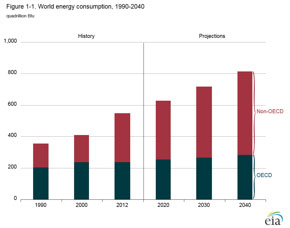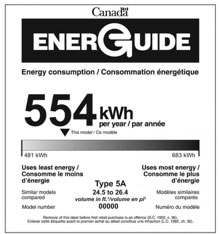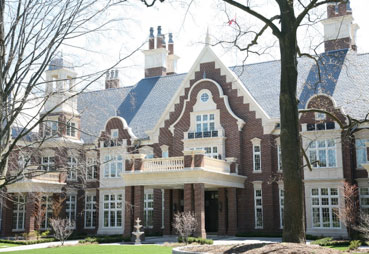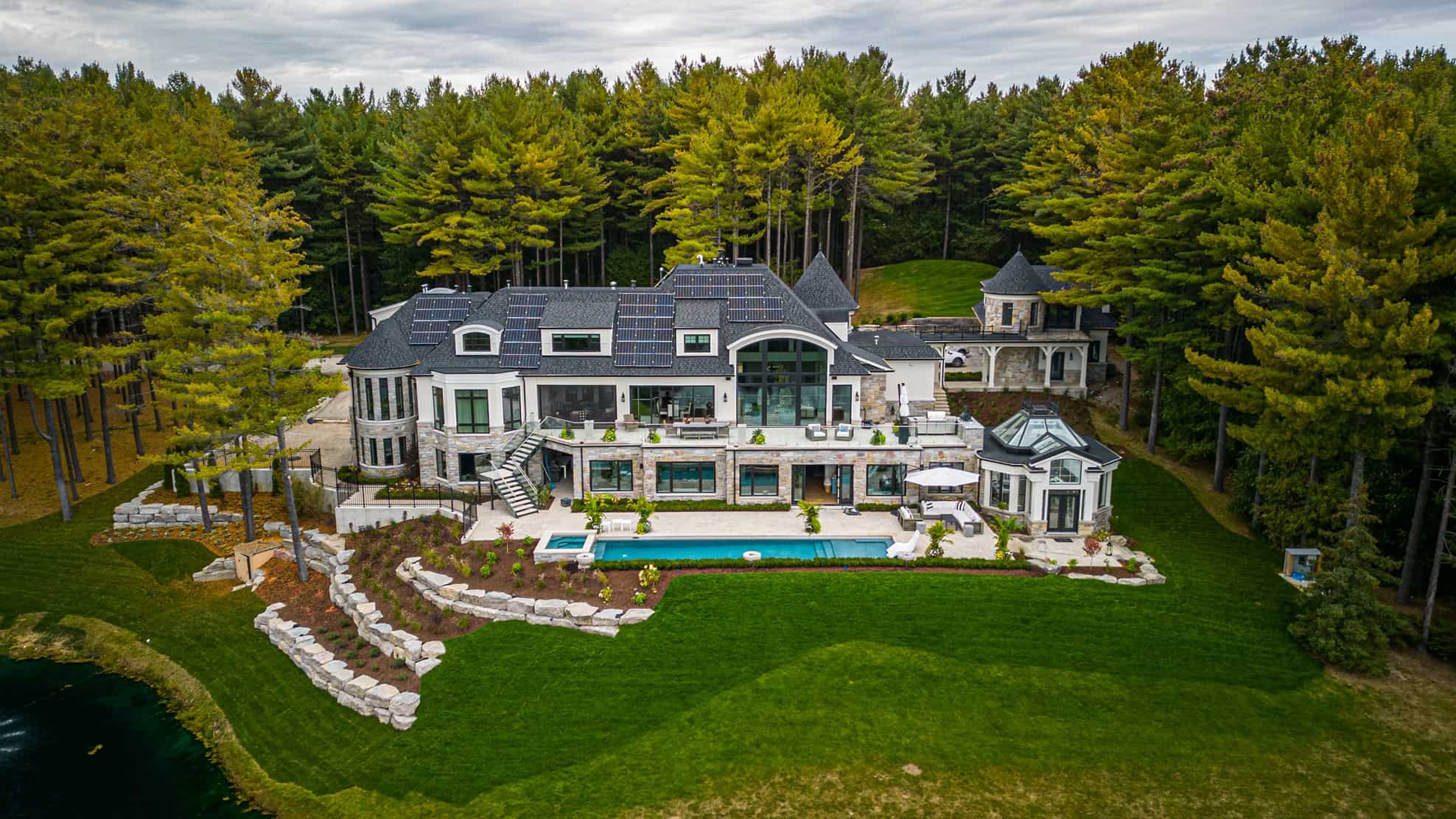Cast your minds back to the ’70s, the days of Abba, Grease and Bell bottoms, the latest cars being sold with seat belts, claiming compliance to “California Motor vehicle standards”. At that time seat belts in cars and similarly crash helmets for a motorcycle rider were felt, by many, to be overweening laws restricting personal freedoms. Roll forward to the new millennium and those, now seemingly arcane, attitudes are playing out in the current debate on Building Code changes in housing. Many resistant to change bemoan the constant code updates requiring greater rigor and the accompanying continuous upgrading required for builders and professionals to keep abreast. Is this progress or some green-crazed hippy Shangrila?

The Ontario Government agenda fueled by the “Provincial Climate plan” is a five-year action plan targeted at reducing Green House Gas (GHG) emissions and reducing carbon footprint. The plan includes compulsory energy rating and disclosure for houses prior to sale. Slated to launch in 2019, it will require energy audits disclosing the actual energy consumption of each individual home. According to Government data (FAO) the average Ontario household spent approximately $2,400 for the year of 2014 on electricity and heating bills. The Government sees this being cut by two thirds in a “Net Zero Ready” home. With the Government’s stated objective of a “Low Carbon Future” following the passing of Climate Change Mitigation and Low-carbon Economy Act and with the Province’s 80% GHG reduction target by 2050, energy hogs will be in the cross hairs!

What is a NET ZERO home? According to CMHC “A net-zero energy (NZE) house is designed and built to reduce household energy needs to a minimum and includes on-site renewable energy systems, so that the house may produce as much energy as it consumes on a yearly basis. A NZE home is not necessarily an “energy autonomous” house or an “off-grid” house, as it can be connected to the electricity grid, so that it can supply electricity to the grid when it is producing more than it needs and draw from the grid when household demands exceed the amount of electricity produced on site. Taken over the year, the energy supplied to the grid balances the energy drawn from the grid, thus, achieving net- zero annual energy consumption.”

In an interview with Mark Wessel, EnerQuality President Corey McBurney says, “The Ontario Building Code is good. Energy Star is better, and NET ZERO is best—the ultimate in energy efficiency. We need to remember that the OBC is good by any standard, especially compared to other provinces and U.S. states. The fact is, we’re already ahead. EnerQuality’s job is to help builders do even better, and Energy Star for New Homes has proven to be the most effective system. As we see it, Energy Star is how we’ll get to net zero.”
Current Canadian Building Codes rate energy consumption on housing based on the “Energuide system”, a rating scale which measures the energy consumption of a home based on a scale of 1-100 (1 being the worst score and 100 the best score for a highly efficient home). Codes are currently hovering in the 80’s and are slated to move higher increasing energy efficiency. Not to confuse the matter further, the Government is revamping the program with a new system that will simply measure the actual energy consumption in gigajoules (a metric measurement of energy) per year based on the design of the home and on-site evaluation by a third party. As this measurement of consumption is an absolute number it brings hard clarity to the numbers, versus the 1-100 scoring which is being phased out.

The Canadian Home Builders Association Net Zero Energy Housing Council Chair and Building Science Expert, Andy Oding states, “While average Canadian households consume between 100 and 120 gigajoules (GJ) in a year, the people living in these homes will consume between 30 and 40 GJ. Because of the windows and the insulation, these homes are the quietest homes you will ever live in. More importantly, these homes are incredibly comfortable. They are more consistently heated and cooled than older homes, and they also circulate fresh air to ensure they are healthier”. To put these numbers in perspective, 1 gigajoule of energy used will do 100 loads of laundry or let you watch 1,230 NHL games!
Andy continues to elaborate on how energy engineers and experts are considering the comfort levels in a home… “we now look closely at the interior wall temperature. We know that one of the major factors influencing comfort is radiant heat loss so a warmer interior wall surface means greater comfort for the home owner.”
According to industry experts the 2030 Government goal for net zero ready housing will be easily attainable, as the general tenor of building codes have been consistently towards upgrading energy standards so the constant climate of change and improvement is just a fact of life for most in the home building business. Although uncharted territory for many, the lessons that will be learned in California, who are set to attain NET ZERO standards by 2020, will be valuable information for many in our Canadian Housing industry – whose timetable lags behind by ten years.
Statistics quoted in CMHC’s Net Zero ready article
The latest round of changes to the building code means that a home built to the 2017 code standards will consume 50 per cent less energy than its 2005 predecessor, according to the Ontario Ministry of Municipal Affairs and Housing. Further, homes built before the recent code changes lost an estimated one third of their energy to air leakage and ventilation/exhaust of interior conditioned air. Besides the obvious, savings on energy costs the tighter “building envelope” requirements increase occupant comfort and enable more control over indoor air quality. These changes include increase in window efficiency, additional insulation, and increased hot water tank and furnace efficiency. HRV and drains to the sewers will also recapture otherwise lost energy.
Mehmet Ferdiner CEA of Building Knowledge Canada, experts in Building Science, comments on NET ZERO ready homes, “We are designing and building them today, however, they are the homes of the future. Net Zero/Net Zero Ready homes are built to a standard that will not expire for many years to come and more importantly homeowners will not be making the biggest purchase of their lives on homes built to a standard that may expire with the next round of Ontario Building Code changes”– Mehmet continues, “Net Zero/Net Zero Ready homes have the ability to be all electric, or more commonly have a “hybrid” type mechanical system. With a “hybrid” system, homeowners have the ability and flexibility to adapt to soaring utility prices. With the hybrid system, (primary electric with a secondary backup system of either gas or propane) homeowners can now very easily switch from electric to gas or vice versa depending on the utility prices at any one time. Much like the new high performance “hybrid” exotic cars (I.e. BMW I8, Porsche 918 Spyder, McLaren P1, 2017 NSX and the new LaFerrari), these homes will achieve the maximum performance while being more energy efficient than ever.
This tightening of the building envelope brings more challenges such as dissipating accumulations of Radon gas and the increased chance of mold growth, but that’s beyond the scope of our discussion today.
To move from Net Zero ready to Net Zero, energy has to be put back into the grid, typically, solar panels are part of that equation. According to Canadian Solar Industries Association, solar panels will pay for themselves within 5 years, without factoring in any Government rebates or subsidies. The cost of PV cells (PV, the technical name for solar panels) has dropped precipitously in the past few years and continues to fall. Adding solar panels to a Net Zero ready home to make the home fully Net Zero is becoming an increasingly sensible step.
NZE housing need not sacrifice architectural design. This award winning home, the MacMahon House nestles 7KW of solar panels on its flat roof.
Back to our opening reminiscences of the glory days of platform shoes, The Incredible Hulk and Welcome Back Kotter… the 1970’s. We who are a little longer in the tooth will recall the energy crisis where long lines assembled at the local service station to receive rationed gasoline, amid the OPEC debacles which resulted in shortages and soaring energy prices. After that, many governments recognizing the huge energy demands of housing, introduced grants and subsidies for double glazed windows, new siding and increased insulation. Will the Government chip in again with large subsidies or will we be faced footing the bill for major energy costs and or renovations to bring our homes up to energy standards?
It surely prompts many questions:
- How will these changes in housing standards effect the average house hold?
- What will the cost $$ of running a house?
- Is there something we need to do to get ready for this and ahead of the game?
- If I invest in upgrading to these newer standards will they pay back?
All good questions fomenting in people’s minds, we turned to Fil Capuano, CET President of Chatsworth Fine Homes and its sister company Oak Harbour Developments Inc. “How do we see this playing out?… Well keeping well ahead of the code requirements, we are currently in the process of NET ZERO certification. This will mean we will not only be up to date with current requirements but be certified to provide a NRCan certified NET ZERO ready home for our clients. I think energy costs will keep increasing, the writing is on the wall, especially when you look at how the Government of Ontario recently kicked the Hydro financing cost down the road. Our clients feel the need to be energy frugal and participate in reducing pollution but costs will certainly play into that equation. Further, when anyone sells a house the energy cost calculation will be part and parcel of figuring out how much the running costs will be along with taxes, mortgage and maintenance.”
When asked how long has Chatsworth been building energy saving measures into their homes, Fil commented “We won the ICF award North America wide when we built Chelster Hall in foam/concrete blocks, a highly energy efficient building method, far ahead of its time when completed back in 2004!
After that we built McMahon House modeled after the R2000 approach, a step which was far more rigorous than code requirements. Including an irrigation cistern, R30 walls, air tight envelope, triple glazed windows… the list goes on. That same project got the BILD Custom Home of the Year award in the 2017 awards luncheon…… We don’t really see it as an option, to not be an up-to-date resource for our clients so they can spend their money wisely.”
Chelster Hall started in 2002, well ahead of its time, incorporated ICF (insulated concrete foam block) a highly energy efficient construction method compared to the code standards in place at the time.
No one has a crystal ball but one thing is certain, the winds of change are blowing and pairing down energy consumption is surely in them. One way or another the inevitable Net Zero home is looming large and the current housing standards will be looked back on, just like bell bottom pants and platform shoes, with some curious and perhaps bewildering amusement.









